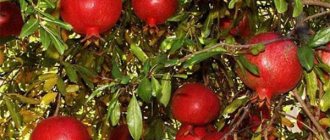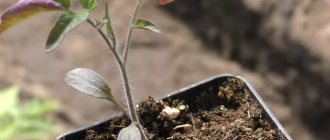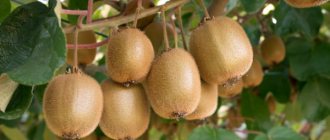When autumn comes, the gardens look like a watercolor on which someone has poured sunny red, yellow and orange paints. Sparks and brush strokes decorate everything - trees, bushes and even grass. A full-fledged participant in the orange-yellow extravaganza can be called Physalis - a beautiful plant that seems to glow with bright, Chinese-like lanterns.
By the way, few people know that the stress should fall on the first syllable - Phy'salis, because the Latin, scientific name of the plant is Physalis. But people lovingly call this beauty the earthen cranberry or the emerald berry. And indeed, a round, green “berry”, which after ripening acquires a variety of shades, is enclosed in a bright shell, similar to a faceted bubble. Interestingly, the Latin name Physalis means “bubble”.
Description
General information
The genus Physalis belongs to the Solanaceae (nightshade) family; taxonomists include tomatoes, potatoes, eggplant, datura and henbane in the same family. However, this orange “bubble” is a giant among the rest, in addition, its stem is even capable of lignification. It differs from other members of the family by its unique, beautiful pericarp. This box, similar to a glowing lantern, is a cover formed by the fused sepals of a former flower.
Physalis has been known in Russia not so long ago, but, gradually spreading, it has won the sympathy of many gardeners. Wonderful and original appearance, the ability to be used as a vegetable plant and even served to guests as a fruit dessert, decorative until late autumn - everything is good in Physalis.
True, the names that it received among the people are quite funny - bladder grass, sleepy grass, dog cherries.
Bladderweed comes from South and Central America; there is quite a lot of it in Peru and Colombia; physalis is also grown as a crop in Mexico, Guatemala, and Venezuela. Since the plant is very heat-loving, this is where it feels comfortable, which makes it possible to develop more and more new varieties with improved characteristics.
Myths, legends, superstitions
There are legends about physalis.
Here is one of them: Light has not always dominated the world. One day, a terrible thing happened - the beautiful Sun disappeared into the interior of the Dragon. Darkness has fallen to the earth, death has reigned. Life stopped, all living things hid, those who didn’t have time died, emptiness swallowed the world. But there was a man who decided to defeat the terrible Creature, rescue the Sun and return Joy and Light. Empty-handed, he went towards the Dragon, and only illuminated his path with a small flashlight.
The struggle was terrible, the mountains and rivers groaned, but Evil is always punished. And the Dragon fell, releasing the Sun from its depths. It flared up like a huge fire, was reflected in a small lantern that Daredevil dropped, and multiplying a hundredfold, the Light scattered across the grass, turning into an unprecedented number of glowing lanterns. Thus Physalis was born.
The “gooseberry with a lid” (another name for physalis) was not spared by the teachings of Feng Shui. “This is the best flower that saves you from boredom,” its experts tell us: “Place a vase with a bouquet of physalis in the darkest place in your home. The branches will illuminate him, driving away melancholy and boredom.”
The seeds of the plant are particularly energetic. If you hold them in your hand, make your deepest wish, and then plant them, then everything will definitely come true. But when the physalis rises and begins to rise, it will attract good people, for young women - betrothed, benevolence and kindness will reign in the house.
However, to obtain a positive effect, physalis must be positioned correctly. In dark, enclosed corners (for example, corridors), a flower can lose its energy; it is better to place it in the sun.
If dried “lanterns” are placed on the windowsill or hung above the door, the house will be protected from the evil of another world.
A little botany (botanical and varietal features)
The following varieties of physalis are known.
Vegetable
Descended from fairly hardy, cold-resistant Mexican species. It has a strongly branching stem with elongated leaves of yellowish, purple or green color. The fruits of this physalis are very large, with different shades, depending on the variety, the weight reaches 80 g. In order to eat them, it is better to remove the coating - it is bitter.
Strawberry
Another name for the variety is berry. Originally from South Africa. The pubescent stems have beautiful, corrugated leaves. The fruits are not very large, up to 10 g, but sweet, with some even strawberry flavor, without bitterness, and a beautiful yellow or orange color.
Decorative
Most often grown in dachas, used as an autumn decoration for flower beds. It can be tall or low, decorated with bell flowers in white, blue and even red. But it becomes most decorative closer to autumn - you can’t take your eyes off the graceful stems strewn with multi-colored (usually bright orange) lanterns.
Interesting Facts
In some countries, physalis is a symbol of love and desired pregnancy. In Europe, there is a beautiful custom of giving physalis. It is customary to present a bouquet of Chinese lanterns to a girl with whom a man wants to have a child. Branches with orange buds are also given to pregnant women - cups with berries hidden inside symbolize the fetus in the mother's womb. The wife's relatives can present such a bouquet to the future father as a sign of gratitude for the successful conception.
There is a Chinese legend about the origin of the physalis plant. In ancient times, an evil dragon swallowed the sun. Darkness reigned on Earth, people could not find each other, animals began to die. There was a brave soul who decided to return the sun to all living things. He took a lantern and went in search of the dragon. The young man wandered for a long time, and, finding an evil monster, killed him. The sun soared up, and the hero, blinded by its rays, dropped the lantern to the ground. As it fell, it turned into thousands of small lanterns that rolled across the ground and hung on the blades of grass.
There is a sign that a bouquet of physalis placed in the house drives away evil spirits and attracts prosperity and comfort. This beautiful plant fills you with positivity just by looking at its cheerful orange lanterns.
Types and varieties
Vegetable varieties
As stated above, physalis can be grown as a vegetable plant. In Mexico, for example, they do this: they use tomatoes as we are accustomed to, add them to meat dishes, and prepare stews. How to distinguish edible and inedible physalis will be discussed below when describing the species and varieties.
Gribovsky
Physalis Gribovsky
One of the most common varieties, can be grown in open ground. It has sour, light green fruits, very similar to tomatoes. The taste is also similar, slightly sour. It is characterized by cold resistance and abundant fruiting.
Kinglet
Physalis wren
Tall (up to 80 cm), erect bush, with light green leaves and low-set flowers. The fruits are large, sweet and sour, suitable for caviar, pickling, you can even make homemade wine from them. Very productive - up to 5 kg per bush. An early-ripening, cold-resistant variety, recommended for cultivation in the Middle Zone.
Tomatillo
Physalis Tomatillo
It has an interesting spicy taste of greenish fruits. Used in cooking (for preparations and canning, making sauces, harmonizes perfectly with sweet peppers, basil, cilantro). Quite early in maturity (up to 95 days after germination).
Moscow early 2045
The variety produces an early ripening harvest. The fruits reach a large size, have a beautiful yellow color, and are quite sweet. The application is extensive - you can prepare both confectionery (pie filling, marmalade), and pickles, salads, and pickle.
Berry varieties
Strawberry
Physalis Strawberry
Tall beautiful plant (reaches a height of 75 cm). The fruits are small, pleasant in color (from yellow to amber), and have the taste and aroma of real strawberries. Used in cooking when preparing sweet dishes - this is a wonderful dessert, an excellent pairing for ice cream. You can make jams and preserve them.
Columbus
A heat-loving variety, it is recommended to grow in greenhouses. It ripens late, but is famous for its high pectin content. Excellent for use as a fresh dessert, but versatile - can also be used for preparations.
Raisin surprise
Physalis Raisin surprise
The variety is self-pollinating, very unpretentious (resistant to both cold and overheating), early ripening. Due to its strong pubescence, it has a second name - “pubescent”. After flowering with interesting yellow flowers it produces many fruits with a pleasant taste. Despite their small size (only 1.5-2 g), the berries are juicy, honey-like, and resemble pineapple in taste and aroma. Universal use.
Decorative varieties
This variety of physalis also has many fans; its “lanterns” in the garden look very festive. The only thing is that the fruits of varieties of this species cannot be eaten - they are poisonous.
Physalis Franchet
Physalis Franchet
A handsome plant, growing up to a meter, with straight slender stems, decorated with huge lanterns - up to 8 cm. The big advantage is that Franchet is a perennial plant.
Physalis Alkekengi
It is also a perennial, the stems are pubescent, and has many small, bright lanterns that literally shower the bush.
Decorative
The cultivation of decorative varieties of physalis dates back to 1894. Ornamental physalis is called Alkekengi (Physalis alkekengi) or Franchet (Physalis francheti), and was named in honor of Rene Franchet. The French botanist was the first to study this plant. The basis of the decorative interest in the variety are the even flowers-lanterns with a diameter of 6-7 cm. On a stem up to 90 cm long there can be 10-15 lanterns. The fruits of ornamental varieties are poisonous and therefore not suitable for food.
Physalis care
The difficulty of planting and caring for physalis depends on the variety. Perennial and annual varieties have very different requirements.
Planting: when and how to plant?
Annual physalis
It is grown from seeds. In the central zone and to the north, it is best to grow it using seedlings. To do this, around March, the seeds are soaked in Epin or sodium permanganate (for disinfection) for several hours, left soaked in gauze or filter paper until roots appear, and transferred to the ground. In the southern regions, seeds can be sown directly into the ground (under the film). After spring return frosts have finally passed, young plants are thinned out, taking into account the distance (at least 20-30 cm).
Perennial varieties
The main methods of growing perennial physalis are dividing the rhizome and cuttings.
- Rhizome division. The procedure can be performed in spring and autumn; physalis is easy to handle such an intervention. In order to divide the bush, it is necessary to remove the layer of soil, use a sharp shovel to divide the rhizome into 2-3 parts, select the divided part of the bush and transplant it into a previously prepared hole. Water generously.
- Cuttings. If you take cuttings from the tips of the shoots in the summer, you can get many plants with identical maternal properties. The cutting must have at least 3 buds. Having planted the cuttings in soil prepared in advance so that a third of the shoot is in the soil, and two thirds are on the surface, it is necessary to wait for rooting. To speed up the process, you can make a mini-greenhouse or cover the planted cuttings with polyethylene. After the gardener makes sure that rooting has occurred, he removes the shelter - the greenhouse.
Fertilizers and fertilizers
Fertilizers for physalis are quite standard.
- During intensive growth and vegetation (spring and early summer), the plant must be fed with powerful organic fertilizers of natural origin. Humus, compost, ash with small additions of industrial mineral fertilizers are well suited. You can use solutions of mullein and bird droppings after fermentation and settling.
- At the beginning of flowering, repeat the above scheme.
- In the fall, after harvesting, it is a good idea to enrich the plant with potassium and organic matter.
Temperature and light
Physalis is a warm and light-loving plant, which is why it does not always feel comfortable in the gardens of the Middle Zone, Siberia, the Urals and even the Moscow region.
If a gardener decides to plant physalis, and not only plant it, but also get significant yields, then it is necessary:
- plant the plant in the brightest places of the site, and mainly cold-resistant varieties;
- in particularly severe frosts, cover with a specialized cloth, and only with steady warming can it be removed.
Growing temperature is an extremely comfortable temperature for any variety: +22...+26°C.
Watering
Watering is moderate and stable with settled water at room temperature. In summer, if the weather is not rainy, you can water daily or every other day, on average once a week is enough.
Ornamental varieties are much more tolerant of cultivation conditions, like any perennial crops grown in the Middle Zone. Their rhizomes are able to withstand unfavorable conditions, even short-term cold weather.
Transfer
Once every 7-9 years, perennial physalis needs to be renewed. To renew, the rhizome is divided into 3-4 parts and transferred to holes with fertile, loose soil. The plantings are trampled down and watered abundantly. This procedure is good to do in the spring; in the fall it also leads to good results. But, most importantly, don’t be late. The rhizome should take root in a new place, putting down new roots.
Trimming
It makes sense to prune only perennial decorative physalis. Gardeners cut off the entire above-ground part. The rhizome is slightly dug in and mulched.
Wintering
Perennial physalis winters well in the middle zone and even further north. For peace of mind, the mulched rhizome after pruning can be covered with spruce branches or non-woven material.
Reproduction methods
Seeds
Annual forms - vegetable and berry varieties - are propagated by seeds. After germination, the seedlings are planted and grown indoors or in heated greenhouses. Planted in the ground during steady warming.
By layering
The method of propagating decorative physalis by layering is simple and effective. To do this, in the spring, part of the rhizome with new shoots is planted in a new place.
Cuttings
Cuttings are carried out as described above.
Homeland of the plant
In Russia and Europe, physalis has become widespread as an ornamental plant. In this territory, it is practically not consumed as food and is not grown on an industrial scale, limiting itself to sowing adjacent areas and park areas. But in the countries of Central and South America, the plant is popular as a healthy ingredient in desserts and drinks, as well as as an independent berry.
Possible problems
Physalis is an unpretentious plant with powerful immunity.
However, it must be remembered that like any representative of Solanaceae, it can suffer from fungal diseases and suffer from untimely ripening of fruits.
It also needs to be formed correctly. To obtain a good harvest, the plant is formed by pinching the tops, since the more the main shoot branches, the more places there will be for laying fruit buds.
If the summer is unfavorable in terms of weather conditions, physalis is hilled to increase resistance to disease and improve the ripening of the crop.
Diseases and pests
Physalis is one of the strongest representatives of the Solanaceae, but, nevertheless, it can get sick. Infections that affect the plant are mainly fungal and viral.
Mosaic
Physalis destroys it very quickly, literally “eating” the plant, like any viral infection. There is no treatment; affected individuals must be urgently destroyed. The garden bed looks sad, where the bushes are dying, dotted with deep painful spots.
Late blight
A notorious fungal infection of nightshades that can destroy entire plants literally overnight. Now many remedies have been developed against this scourge (for example, Proton, Hom, Thanos). But, unfortunately, the fungus infects the plant at the time of fruit ripening and one has to weigh what is more profitable for the gardener - to use treated fruits for food or to destroy the diseased specimen.
Among the pests, the most harmful are mole crickets and wireworms. Fortunately, you can fight them using folk methods. For example, add wood ash or bird droppings to the soil.
Benefit
Physalis fruits have high nutritional value. They contain a lot of vitamin C, K, PP, B1, B6. They contain minerals: magnesium, phosphorus, iron. In addition, they have:
- sucrose
- pectins
- carotenoids
- quercetin
- lycopene
- tannins
- organic acids (malic, citric, caffeic, tartaric)
Thanks to the vitamin complex contained in physalis, eating berries has a general strengthening effect on the body and increases resistance to viruses. Dietary fiber contained in the pulp helps the digestion process, increases intestinal motility, and removes harmful substances. The fruits of the plant have the following properties:
- anti-inflammatory
- choleretic
- diuretic
- painkiller
- bactericidal
The berries contain antioxidants that prevent healthy cells from degenerating into atypical ones, thereby preventing the development of cancer. Vitamins B and C have a positive effect on the functioning of the central nervous system and strengthen the cellular structure. Nicotinic acid prevents the formation of cholesterol plaques inside blood vessels. Potassium regulates blood pressure and accelerates metabolic processes in cells. The juice secreted by the fruit helps heal wounds on the skin. With the help of decoctions and tinctures of edible types of berries, diseases such as:
- bronchitis, colds, flu;
- cystitis, prostate;
- dermatophytosis, skin mycosis;
- kidney stone disease;
- hypertension.
Useful properties and contraindications
Composition, nutritional value, calorie content
Any physalis fruit, vegetable or berry, contains a lot of vitamins and microelements. A huge amount of vitamin C, vitamin A (14% of the daily dose required for the body), antioxidants and a unique composition of B vitamins make the plant indispensable in medical nutrition. In addition, physalis fruits are low in calories and can be used in diets for metabolic disorders accompanied by excess weight. Let's take a closer look at the benefits and harms this plant brings.
Beneficial features
To illustrate the beneficial properties of physalis, we can cite as an example the opinion of the famous folk healer Alexei.
- for stones in the kidneys and bladder - a decoction of the fruits orally;
- for gout and edema - decoction of fruits externally;
- for purulent inflammation - juice or infusion. You can use fresh berries;
- for pain in the stomach and intestines - fresh fruit puree;
- for dermatitis - physalis ointment (fruit ash mixed with vegetable oils).
Contraindications
There are no special contraindications to the use of Physalis. However, we must remember that, like any sour fruit, it can cause aggravation in patients with gastritis. Patients with pancreatic and gallbladder insufficiency also need to be careful. Diabetics should limit very sweet varieties in their menu.
Application area
As stated above, the scope of application is quite wide. You can use decoctions for flu, laryngitis, and lung diseases. Low-calorie desserts are good for dietary nutrition.
Traditional medicine recipes
Decoction
Place 30 g of dried fruits in 0.5 liters of water and cook for five minutes. Use the resulting dose for two days for kidney and bladder diseases.
Ointment
Burn dried fruits (100 g) over an open flame until ash is obtained. Grind and sift the ash. Mix with a small amount of olive oil until you obtain the consistency of an ointment. Use for healing wounds, cracks and dermatitis.
How does it affect weight loss?
The low calorie content of fruits allows them to be included in various diets and promotes weight loss. At the same time, the body receives the necessary vitamins, micro- and macroelements. Improved digestion thanks to the plant fibers contained in the fruit helps to avoid food stagnation in the organs and the deposition of excess fat. The body begins to use fat reserves, which contributes to gradual weight loss.
People who are overweight often suffer from chronic diseases. Bladder berries fight inflammation and control blood sugar levels.
Physalis fruits have the ability to quickly satiate and control appetite, which is also important when losing weight.
Physalis recipes
Salty
For 1 kg of workpiece:
- Fruits – 1 kg;
- Dill – 50 g;
- Horseradish root - to taste;
- Garlic - 2 cloves;
- Hot pepper - to taste;
- Salt - 50-60 g;
- Currant leaf – 5-7 pcs.;
- Tarragon - a few sprigs;
- Cilantro – 7-10 seeds;
- Water - 1 liter.
Peel, rinse, and place the fruits in sterilized jars. Prepare the brine - boil all the spices and salt in a liter of water. Pour brine over everything and add grated garlic. Leave the jars in a warm place for a week. Check the fermentation process daily. When the brine sours, drain it and boil several times. Pour the contents of the jars with boiling brine, roll up and wrap. Store in a cool place.
Caviar
- Vegetable physalis fruits – 1 kg;
- Onions - 500 g;
- Carrots - 500 g;
- Parsley root - 200 -300 g;
- Salt - to taste;
- Sugar - to taste;
- Garlic – 3 cloves;
- Ground black pepper - 1/2 teaspoon.
Prepare all vegetables and fry in vegetable oil. Place everything in a container, add the rest of the ingredients, and simmer. Grind in a blender, cool. Serve with meat or poultry.
The wonderful plant physalis is not very common, and completely undeservedly. But every lover of beauty, if he dares to plant a wonderful “bubble” of physalis, will definitely be rewarded for his efforts in growing it with the gorgeous glow of Chinese lanterns on cloudy autumn days, the wonderful aroma of exotic jam and spicy, appetite-stimulating pickles.











